In the fast-paced world of manufacturing and assembly, precision, efficiency, and safety are paramount. Toggle clamps, often taken for granted, play a vital role in ensuring these attributes are met consistently. Understanding the differences between various toggle clamp types can significantly influence the outcomes in production environments.
Toggle clamps serve as quick-action hold-down devices used in various industries. Their main purpose is to securely hold objects in place during operations. By understanding the nuances among different toggle clamp types, professionals can make informed decisions suitable for their specific applications.
Diving into the details, we will unravel the distinctions between eight predominant toggle clamp types. Let’s explore them.
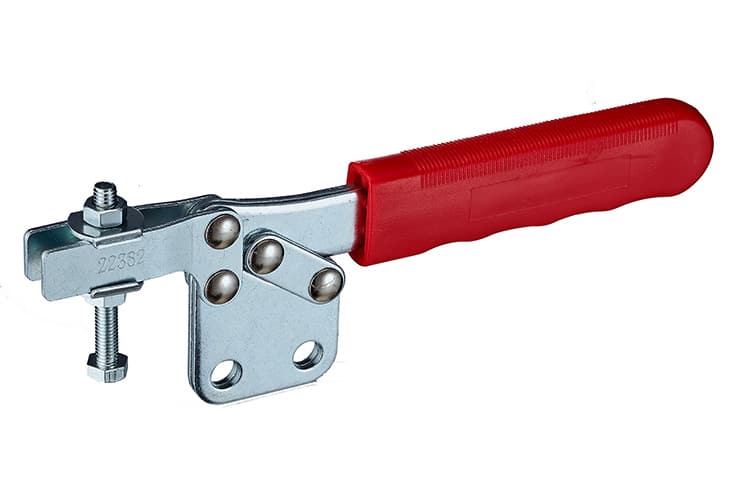
Push-Pull Toggle Clamps
Push-pull toggle clamps are versatile tools often used in machinery for their straight-line action. They can both push and pull while maintaining a constant clamping force.
Push-pull clamps come with a handle that, when activated, either pushes or pulls the plunger, depending on its orientation. This action translates into either pushing or pulling the workpiece against a stationary object or surface. The clamping force remains consistent throughout the operation, making it ideal for situations requiring steady pressure.
Latch Toggle Clamps
Latch toggle clamps are designed primarily for sealing and latching applications, like securely closing lids or doors on machinery or containers.
The working mechanism involves a latch hook or a latch plate. When the handle of the clamp is activated, it moves the hook or plate into a locked position. This ensures that the object or lid it is attached to remains shut securely. Its quick action and reliable hold make it preferable for fast-paced environments.
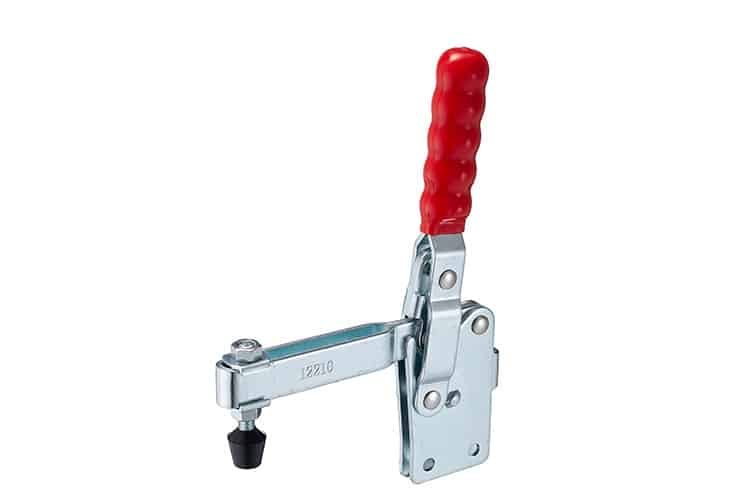
Vertical Handle Toggle Clamps
Vertical handle toggle clamps, as the name suggests, have handles that move in a vertical direction. They’re popularly used in woodworking and metalworking applications.
When the handle is pushed downwards, the clamping arm moves downward as well, exerting force on the object below. This downward force ensures that the workpiece is held firmly in place, allowing for precise operations without the fear of any movement.
Horizontal Handle Toggle Clamps
Similar to their vertical counterparts, horizontal handle toggle clamps have handles that move in a horizontal direction. These clamps are often used where vertical space is limited.
Activating the handle in a horizontal motion results in the clamping arm either moving left or right. This side-to-side clamping action allows the workpiece to be held securely on its sides, which can be essential in certain assembly lines or machinery.
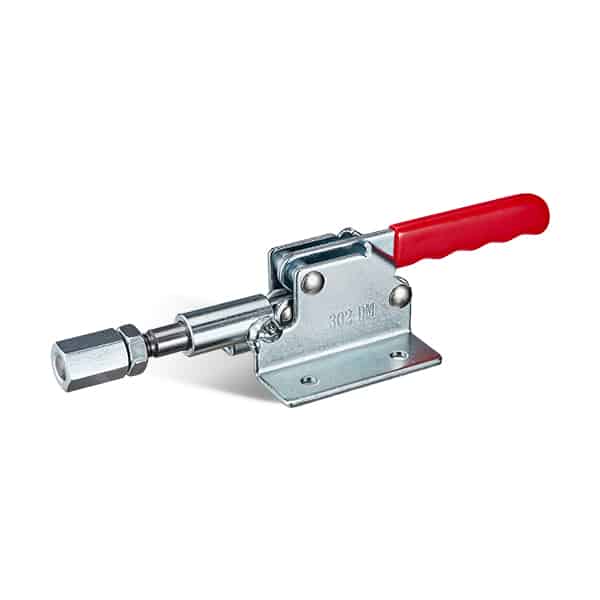
Pneumatic Toggle Clamps
Driven by air pressure, pneumatic toggle clamps offer a combination of speed, consistency, and automation. They’re especially beneficial in mass production setups.
These clamps utilize compressed air to exert clamping force. The level of force and speed can be adjusted, making it flexible for different requirements. Automation compatibility also allows integration with complex machinery for synchronized operations.
Pull-Action Latch Clamps
Pull-action latch clamps are commonly used for applications requiring the joining of two separate objects, like molds or lids.
Upon activation, the clamping arm pulls the attached object towards it, ensuring a tight fit. They come in handy where a pulling action is needed to draw two components together securely.
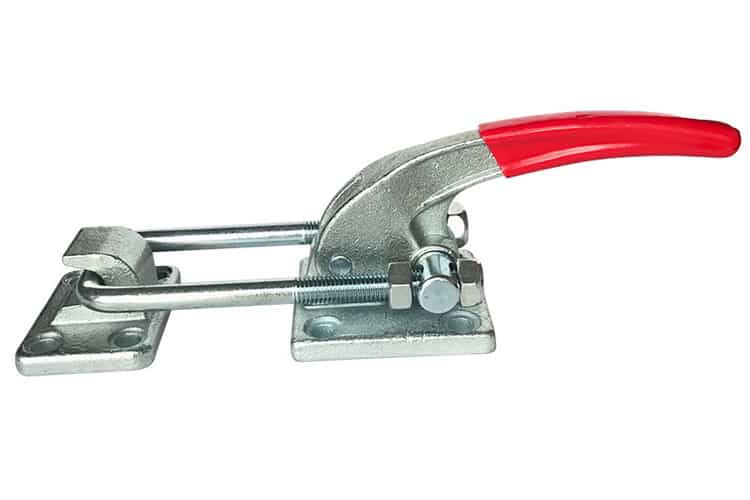
U-Bar Hold-Down Clamps
U-Bar hold-down clamps feature a U-shaped bar, making them suitable for tasks where varied workpiece sizes need to be accommodated.
The clamping force is exerted downward, holding the workpiece against a base or surface. The unique U-shaped design allows for the attachment of custom-made spindles to fit specific workpieces, adding to its adaptability.
Air-Powered Hold Down Clamps
Air-powered hold-down clamps combine the mechanics of traditional clamps with the efficiency of pneumatic systems. These clamps use air pressure to exert clamping force.
The primary advantage is the consistent force provided regardless of fluctuations in the air supply. This ensures that the workpiece remains stationary during operations, providing reliability and precision.
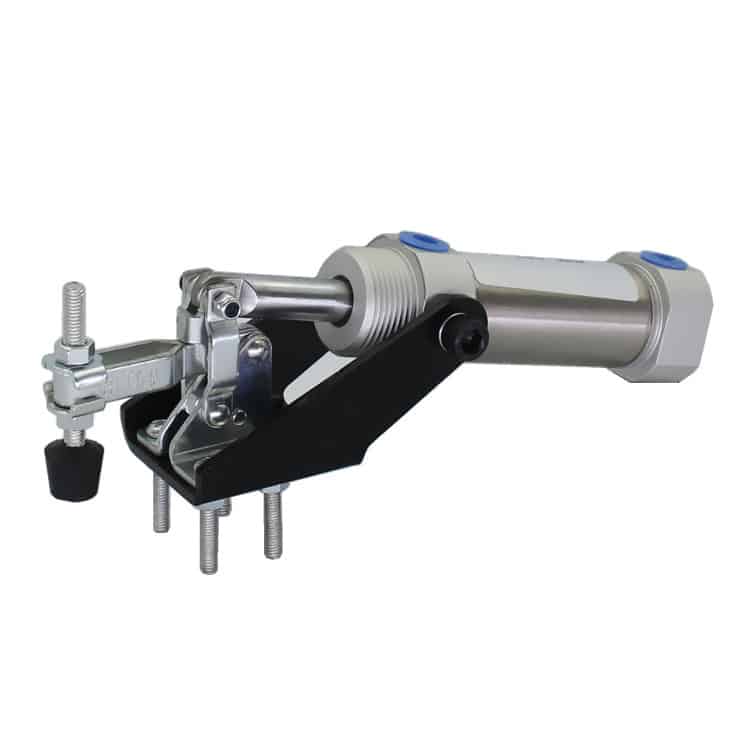
Conclusion
Toggle clamps, though often overlooked, play a crucial role in various industrial operations. Understanding the differences between their types can lead to optimized production processes, ensuring efficiency, precision, and safety. As we’ve seen, each toggle clamp type serves specific needs, making them invaluable tools in the right contexts.
You might also be interested:
